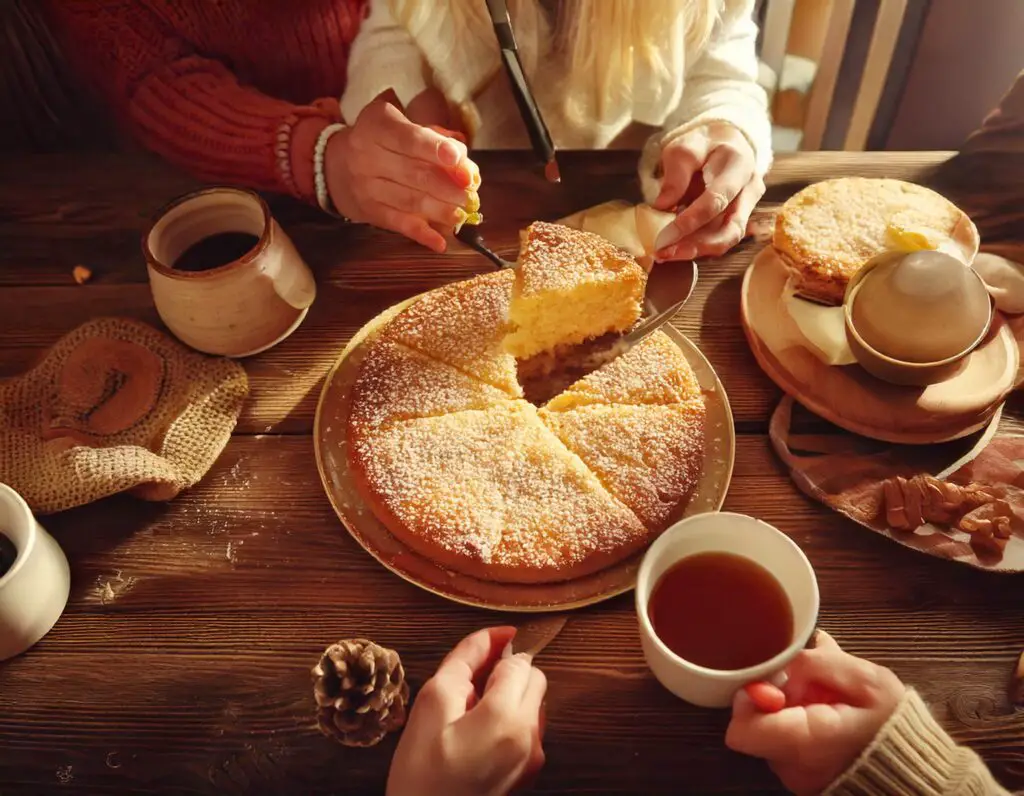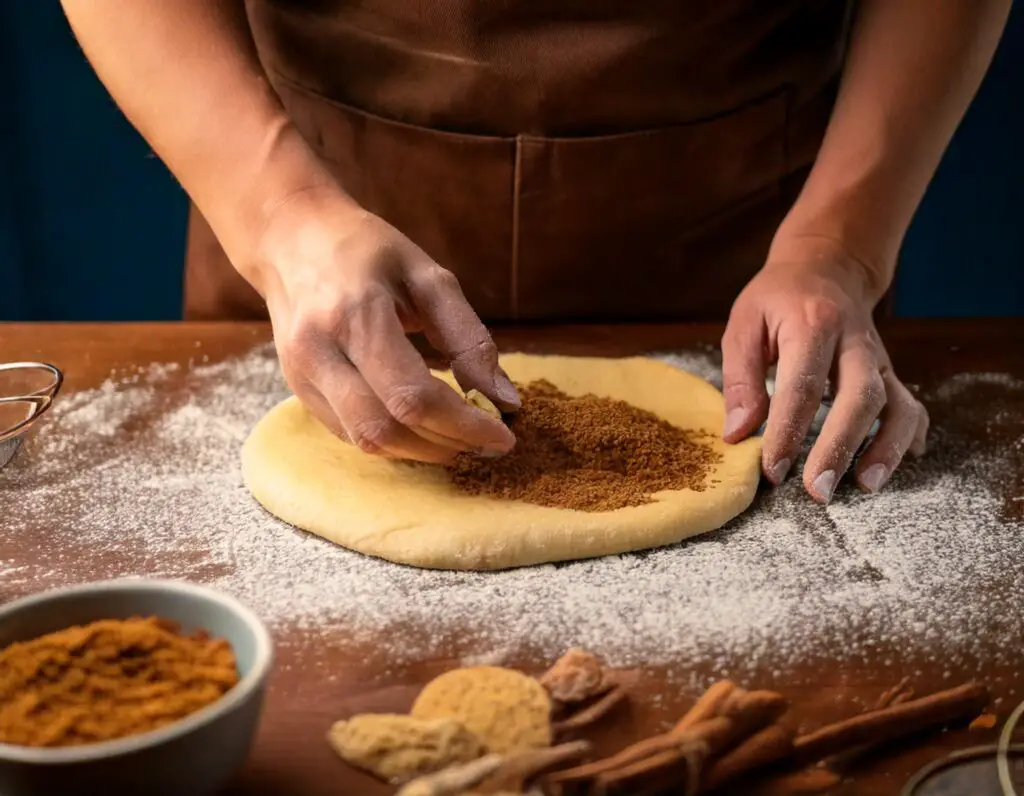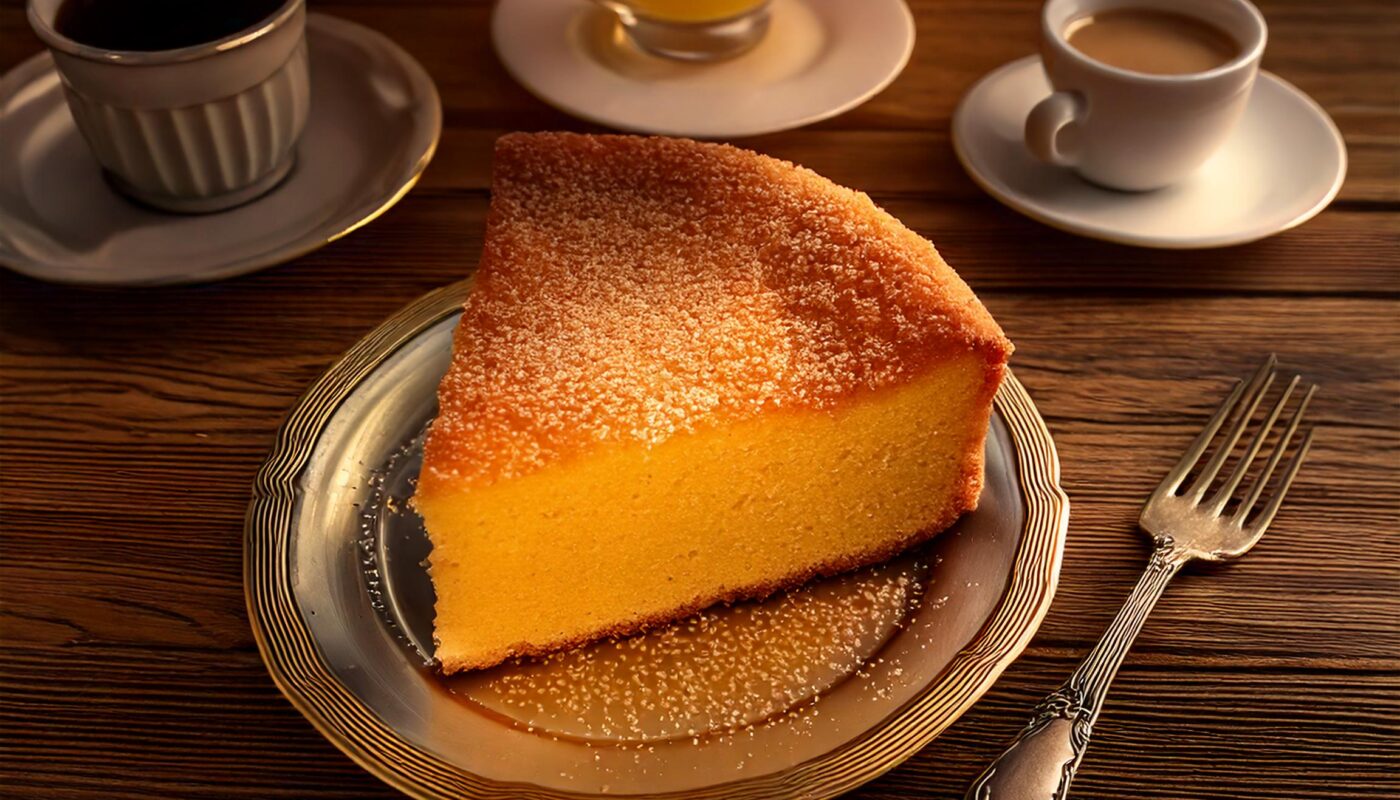Discover the rich history and comforting flavors of Moravian sugar cake, a tender, buttery delight that’s steeped in tradition and beloved for generations.
A Sweet Slice of History
If you’ve never encountered Moravian sugar cake, prepare to fall in love with a confection that’s more than just dessert—it’s a window into history. Imagine biting into a buttery, tender coffee cake crowned with a caramelized topping of cinnamon and brown sugar, its simplicity masking centuries of rich cultural heritage. This iconic treat, deeply rooted in the culinary traditions of Moravian communities, has been a favorite at breakfast tables and celebrations for hundreds of years.
Originating from the Moravian Church, a Protestant group hailing from the regions of Moravia and Bohemia (modern-day Czech Republic), the sugar cake’s story is as textured and layered as the dessert itself. From the 18th century, when Moravians brought the recipe to America, to its contemporary iterations gracing tables in Pennsylvania and North Carolina, this cake has been a testament to the enduring appeal of heritage baking.
What Makes Moravian Sugar Cake So Special?

The beauty of Moravian sugar cake lies in its unpretentious ingredients and meticulous preparation. A unique addition sets this recipe apart: mashed potatoes. Yes, you read that right. The dough’s signature softness and elasticity come from incorporating these spuds, a technique likely borrowed from early German baking traditions. The potatoes boost natural yeast growth and lend a tender crumb, making every bite melt in your mouth.
Topped with a mixture of brown sugar, cinnamon, and melted butter, the cake achieves a perfect balance of sweetness and spice. The final flourish is the dimpled surface—created by pressing fingertips into the risen dough—a detail that ensures the topping melds seamlessly into the cake during baking.
The Traditional Recipe
To craft this beauty, bakers begin by boiling and mashing potatoes to form the dough base. Active dry yeast, flour, sugar, milk powder, and a pinch of salt are combined into a velvety mixture, kneaded until smooth and left to rise. Once spread onto a half-sheet pan, the dough undergoes a second rise, ensuring a fluffy yet sturdy foundation. The topping, a simple mix of brown sugar, cinnamon, and butter, is sprinkled and drizzled over the surface, soaking into the cake as it bakes to golden perfection.
Ingredients:
- 1 medium russet potato, peeled and cut into chunks
- 1/2 cup warm water (110°F)
- 1/2 teaspoon granulated sugar
- 2 packages active dry yeast (4 1/2 teaspoons)
- 3/4 cup warm water (110°F)
- 1/2 cup granulated sugar
- 2 tablespoons dry milk powder
- 1/4 cup instant mashed potato flakes
- 1/2 teaspoon salt
- 1/2 cup unsalted butter, melted and cooled
- 2 large eggs
- 4 to 6 cups all-purpose flour
Topping:
- 1 cup brown sugar (light or dark)
- 1 teaspoon ground cinnamon
- 1/2 cup unsalted butter, melted and cooled
Instructions:
- Prepare the Potato: Boil the potato chunks until tender, about 10-15 minutes. Drain, mash until smooth, and let cool slightly.
- Activate the Yeast: In a small bowl, combine 1/2 cup warm water and 1/2 teaspoon sugar. Sprinkle the yeast over the water and let it sit until foamy, about 5 minutes.
- Mix the Dough: In a large mixing bowl, combine the mashed potato, 3/4 cup warm water, 1/2 cup sugar, dry milk powder, instant mashed potato flakes, salt, melted butter, and eggs. Add the activated yeast mixture and 1 cup of flour. Beat on medium speed for 2 minutes.
- Knead the Dough: Gradually add the remaining flour, 1 cup at a time, until a soft dough forms. Turn the dough onto a floured surface and knead until smooth and elastic, about 8-10 minutes.
- First Rise: Place the dough in a greased bowl, turning once to grease the top. Cover and let rise in a warm place until doubled in size, about 1 hour.
- Shape the Dough: Punch down the dough and transfer it to a greased half-sheet pan (18×13 inches) or a jelly roll pan. Spread the dough evenly in the pan. Cover and let rise for 30 minutes.
- Prepare the Topping: In a small bowl, mix the brown sugar and cinnamon.
- Dimple the Dough: Using your fingers, make shallow indentations all over the surface of the dough. Sprinkle the brown sugar mixture evenly over the top, then drizzle with the melted butter.
- Second Rise: Let the dough rise for another 30 minutes while preheating the oven to 375°F (190°C).
- Bake: Bake for 12-15 minutes, or until golden brown. Let cool slightly before serving.
Regional Twists on a Classic Favorite

Though the traditional Moravian sugar cake recipe has remained remarkably consistent over time, bakers across America have added their own twists to the classic:
- Nutty Additions: Chopped pecans or walnuts provide a delightful crunch and a hint of nuttiness.
- Fruit Infusions: Some bakers incorporate dried fruits like raisins or currants into the dough, adding subtle bursts of sweetness.
- Spice Variations: Nutmeg, cardamom, or even a dash of allspice can be added to the topping for a more complex flavor profile.
These regional adaptations honor the original recipe while showcasing the creativity of modern bakers.
Pairing Moravian Sugar Cake for Maximum Enjoyment
Whether you’re savoring a slice for breakfast, indulging in it as an afternoon snack, or serving it as a dessert, pairing is everything. Here’s how to elevate your experience:
- Coffee: A medium roast balances the cake’s sweetness without overshadowing its delicate flavors.
- Tea: Black teas like Earl Grey or English Breakfast offer a rich counterpoint to the buttery cake.
- Wine: For an indulgent dessert pairing, try a sparkling Moscato or a late-harvest Riesling—the acidity and effervescence cut through the cake’s richness beautifully.
The Legacy Lives On
Moravian sugar cake isn’t just a food—it’s a cultural touchstone. Passed down through generations, it connects families, preserves traditions, and celebrates a shared love for simple yet profound flavors. Today, its popularity transcends its original communities, appearing at farmer’s markets, bakeries, and holiday gatherings across the United States.
Biting into a piece is like stepping into history, a taste of the Old World brought to life in modern kitchens. Whether you’re a seasoned baker or someone discovering it for the first time, Moravian sugar cake invites you to slow down, share a moment, and celebrate the enduring power of tradition.
Your Turn – Think This is Yummy? Or Hate It? We Want to Hear From You
Please offer an insightful and thoughtful comment. Idiotic, profane, or threatening comments are eliminated without remorse. Consider sharing this story. Follow us to have other feature stories fill up your Newsbreak feed from ThumbWind Publications.
Sweet Heritage: Exploring the Timeless Allure of Moravian Sugar Cake ?
Meta Description: Discover the rich history and comforting flavors of Moravian sugar cake, a tender, buttery delight that’s steeped in tradition and beloved for generations.
A Sweet Slice of History
If you’ve never encountered Moravian sugar cake, prepare to fall in love with a confection that’s more than just dessert—it’s a window into history. Imagine biting into a buttery, tender coffee cake crowned with a caramelized topping of cinnamon and brown sugar, its simplicity masking centuries of rich cultural heritage. This iconic treat, deeply rooted in the culinary traditions of Moravian communities, has been a favorite at breakfast tables and celebrations for hundreds of years.
Originating from the Moravian Church, a Protestant group hailing from the regions of Moravia and Bohemia (modern-day Czech Republic), the sugar cake’s story is as textured and layered as the dessert itself. From the 18th century, when Moravians brought the recipe to America, to its contemporary iterations gracing tables in Pennsylvania and North Carolina, this cake has been a testament to the enduring appeal of heritage baking.
What Makes Moravian Sugar Cake So Special?
The beauty of Moravian sugar cake lies in its unpretentious ingredients and meticulous preparation. A unique addition sets this recipe apart: mashed potatoes. Yes, you read that right. The dough’s signature softness and elasticity come from incorporating these spuds, a technique likely borrowed from early German baking traditions. The potatoes boost natural yeast growth and lend a tender crumb, making every bite melt in your mouth.
Topped with a mixture of brown sugar, cinnamon, and melted butter, the cake achieves a perfect balance of sweetness and spice. The final flourish is the dimpled surface—created by pressing fingertips into the risen dough—a detail that ensures the topping melds seamlessly into the cake during baking.
The Traditional Recipe
To craft this beauty, bakers begin by boiling and mashing potatoes to form the dough base. Active dry yeast, flour, sugar, milk powder, and a pinch of salt are combined into a velvety mixture, kneaded until smooth and left to rise. Once spread onto a half-sheet pan, the dough undergoes a second rise, ensuring a fluffy yet sturdy foundation. The topping, a simple mix of brown sugar, cinnamon, and butter, is sprinkled and drizzled over the surface, soaking into the cake as it bakes to golden perfection.
Regional Twists on a Classic Favorite
Though the traditional Moravian sugar cake recipe has remained remarkably consistent over time, bakers across America have added their own twists to the classic:
- Nutty Additions: Chopped pecans or walnuts provide a delightful crunch and a hint of nuttiness.
- Fruit Infusions: Some bakers incorporate dried fruits like raisins or currants into the dough, adding subtle bursts of sweetness.
- Spice Variations: Nutmeg, cardamom, or even a dash of allspice can be added to the topping for a more complex flavor profile.
These regional adaptations honor the original recipe while showcasing the creativity of modern bakers.
Pairing Moravian Sugar Cake for Maximum Enjoyment
Whether you’re savoring a slice for breakfast, indulging in it as an afternoon snack, or serving it as a dessert, pairing is everything. Here’s how to elevate your experience:
- Coffee: A medium roast balances the cake’s sweetness without overshadowing its delicate flavors.
- Tea: Black teas like Earl Grey or English Breakfast offer a rich counterpoint to the buttery cake.
- Wine: For an indulgent dessert pairing, try a sparkling Moscato or a late-harvest Riesling—the acidity and effervescence cut through the cake’s richness beautifully.
The Legacy Lives On
Moravian sugar cake isn’t just a food—it’s a cultural touchstone. Passed down through generations, it connects families, preserves traditions, and celebrates a shared love for simple yet profound flavors. Today, its popularity transcends its original communities, appearing at farmer’s markets, bakeries, and holiday gatherings across the United States.
Biting into a piece is like stepping into history, a taste of the Old World brought to life in modern kitchens. Whether you’re a seasoned baker or someone discovering it for the first time, Moravian sugar cake invites you to slow down, share a moment, and celebrate the enduring power of tradition.
Your Turn – Think This is Yummy? Or Hate It? We Want to Hear From You
Please offer an insightful and thoughtful comment. Idiotic, profane, or threatening comments are eliminated without remorse. Consider sharing this story. Follow us to have other feature stories fill up your Newsbreak feed from ThumbWind Publications.
Check Out Our Other Popular Culinary Features
5 Best Cuban Sandwich Tampa – Flavorful Trek Of Rich History
Explore the origins and top spots to savor Cuban sandwiches in Tampa, a city steeped in culinary fusion and cultural pride.
Is A.1. Buttering Us Up? New Product Dips Into Steakhouse Game
In a move that breaks its five-year silence on new products, A.1. is venturing beyond sauces, debuting a new steakhouse-inspired butter that promises bold, restaurant-quality flavor for home cooks.
The Secret Behind Red Hot Dogs – Fascinating Story of Why They’re Red
Ever wondered why your favorite hot dog sports a vibrant red color? It’s a fascinating tale of history, science, and cultural significance.




